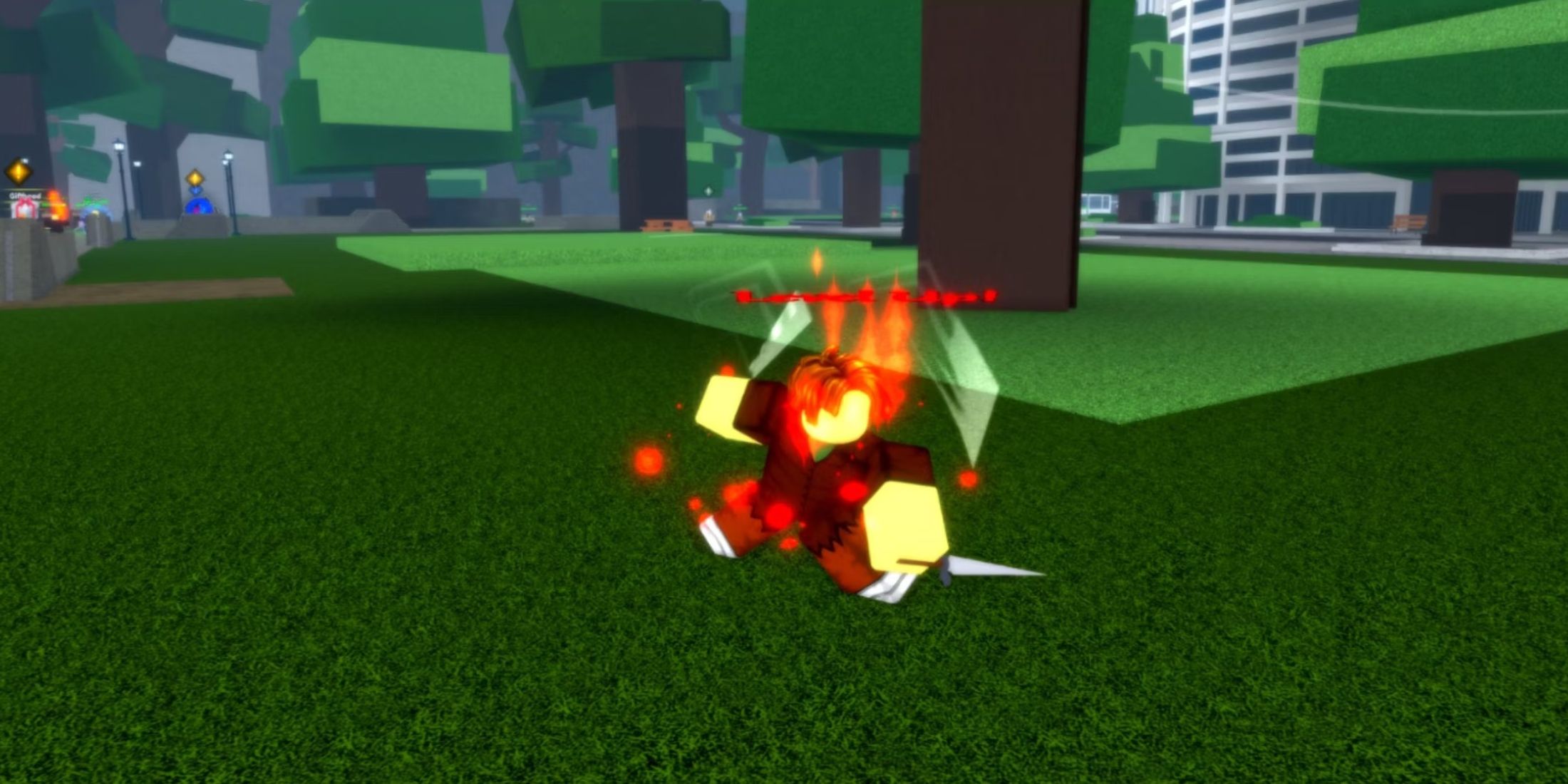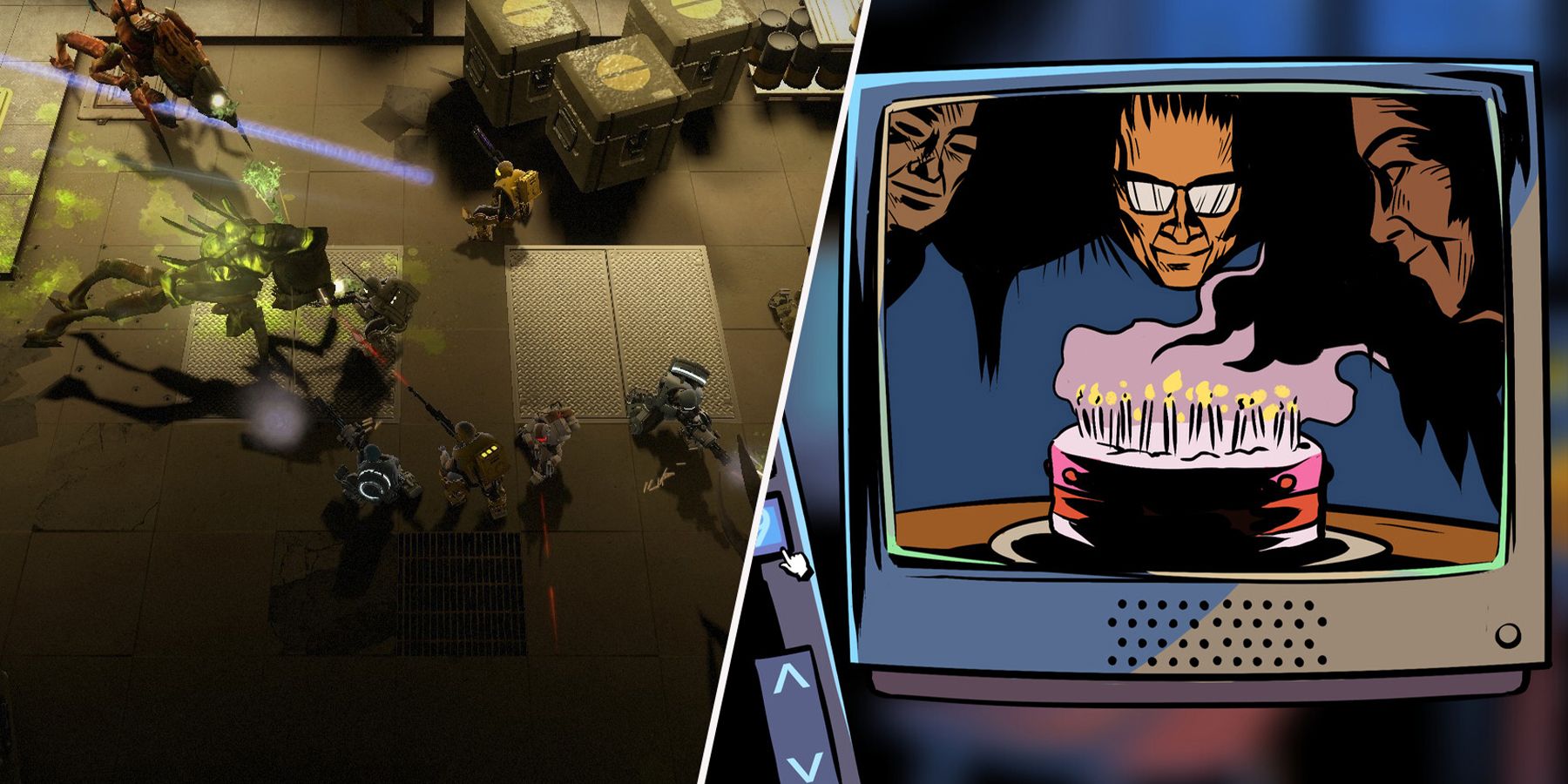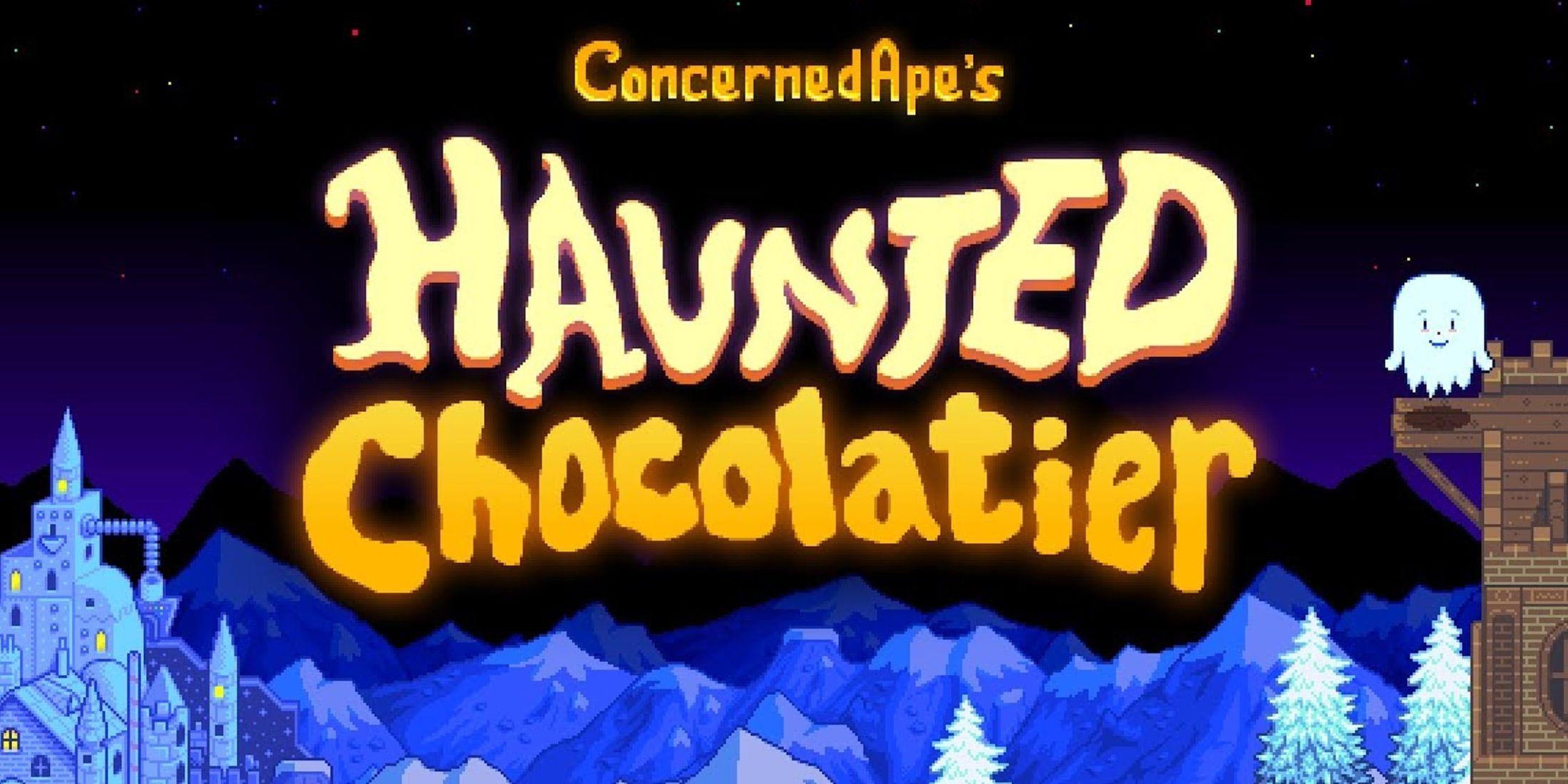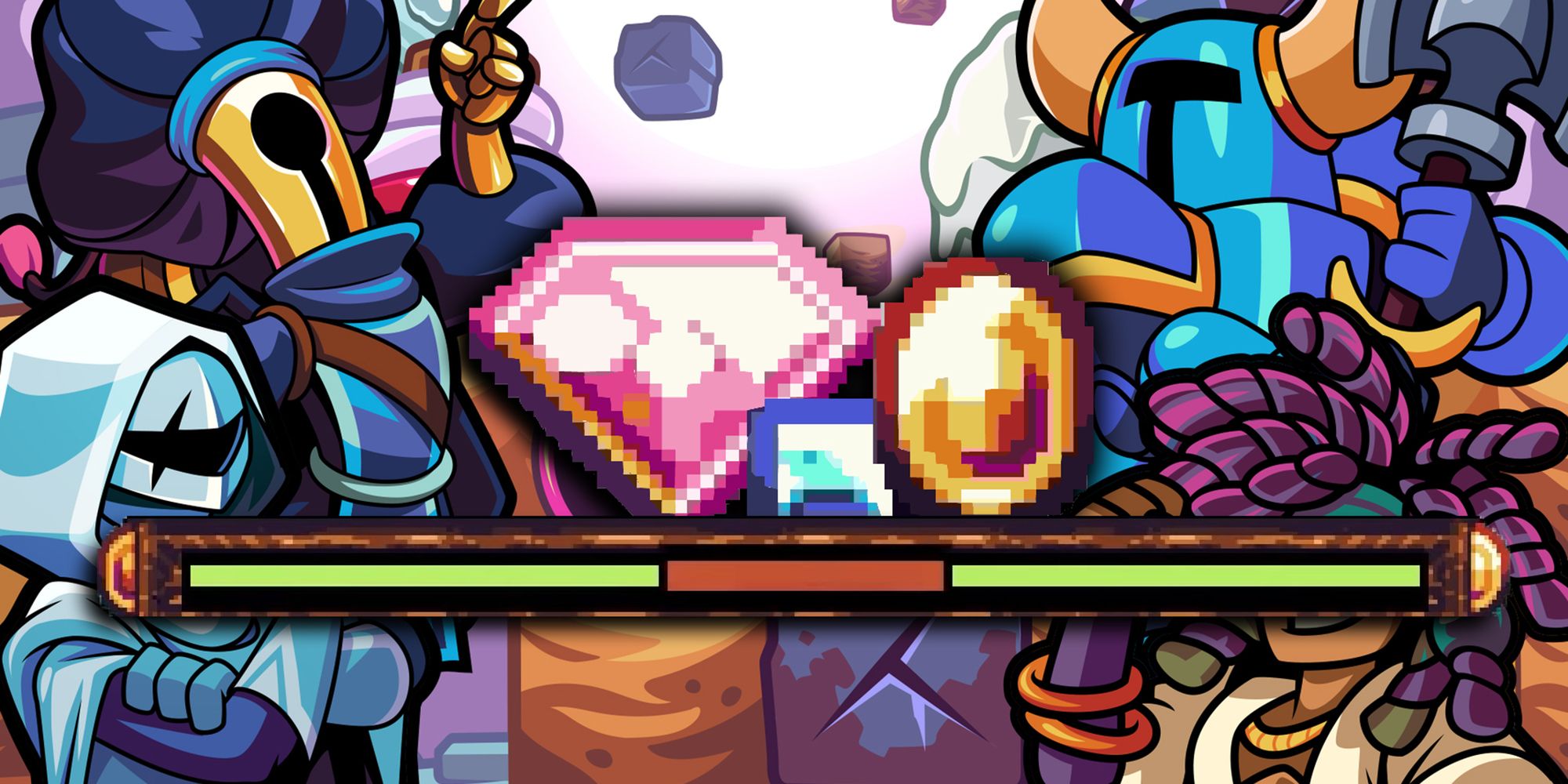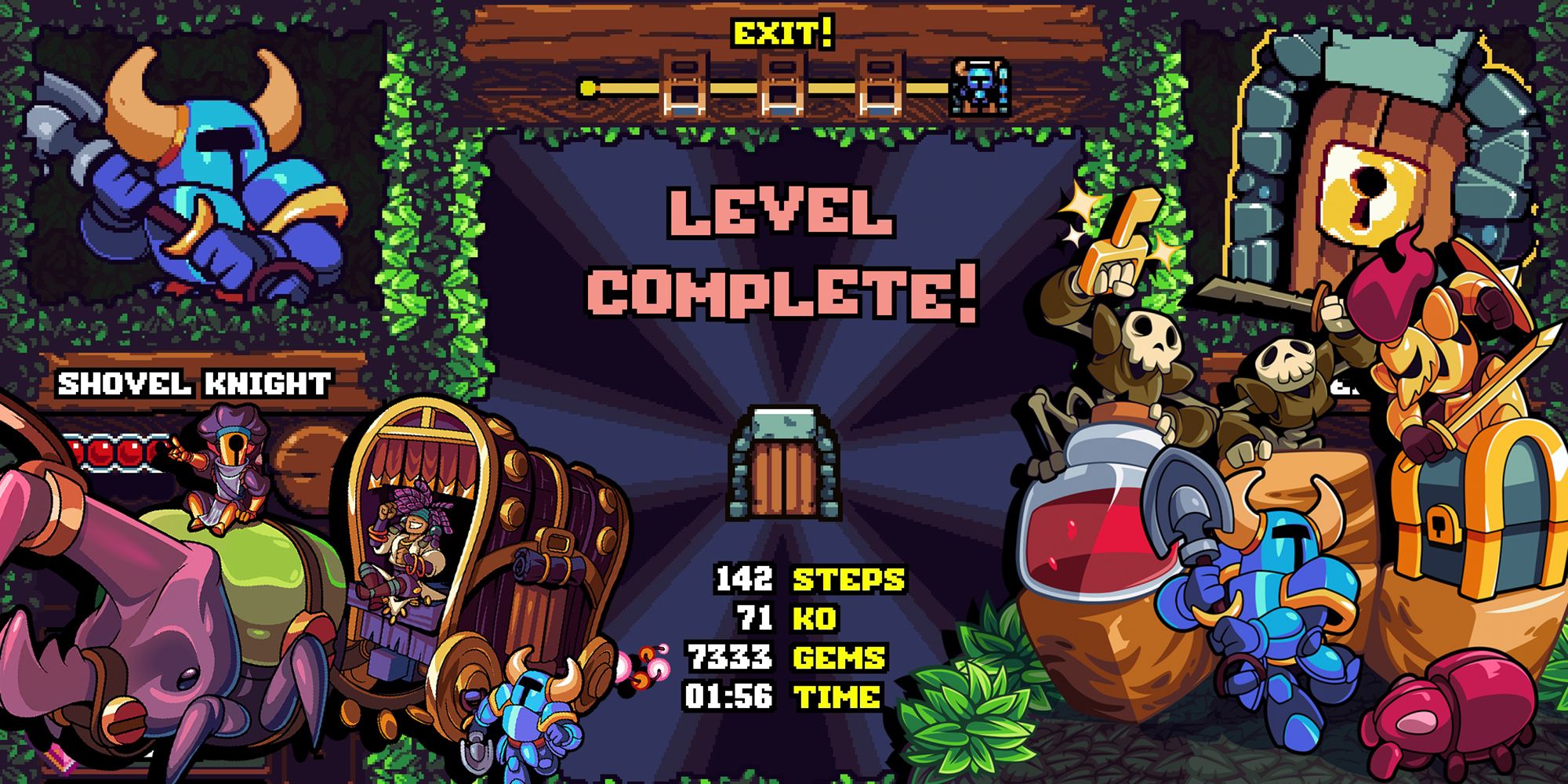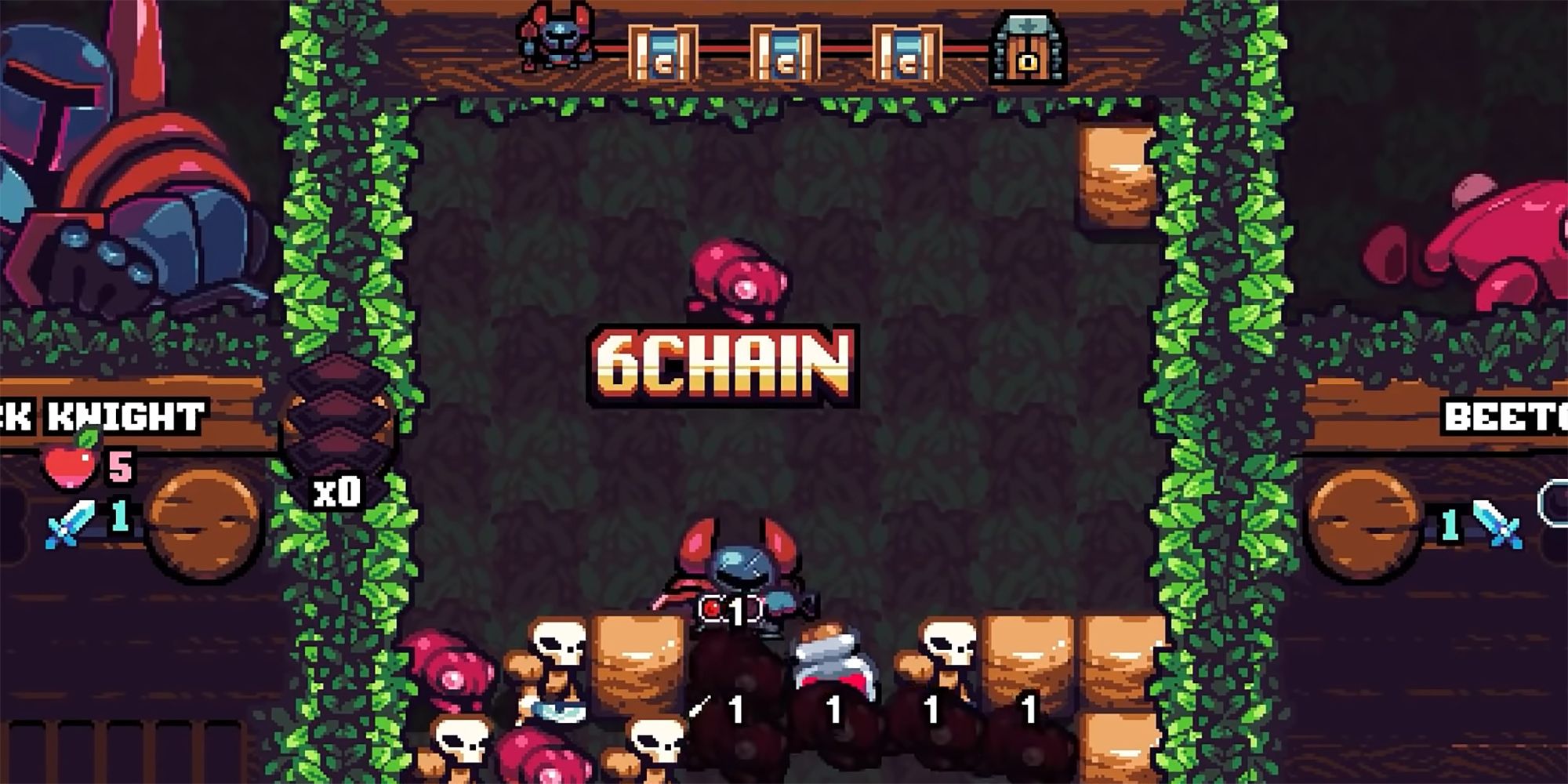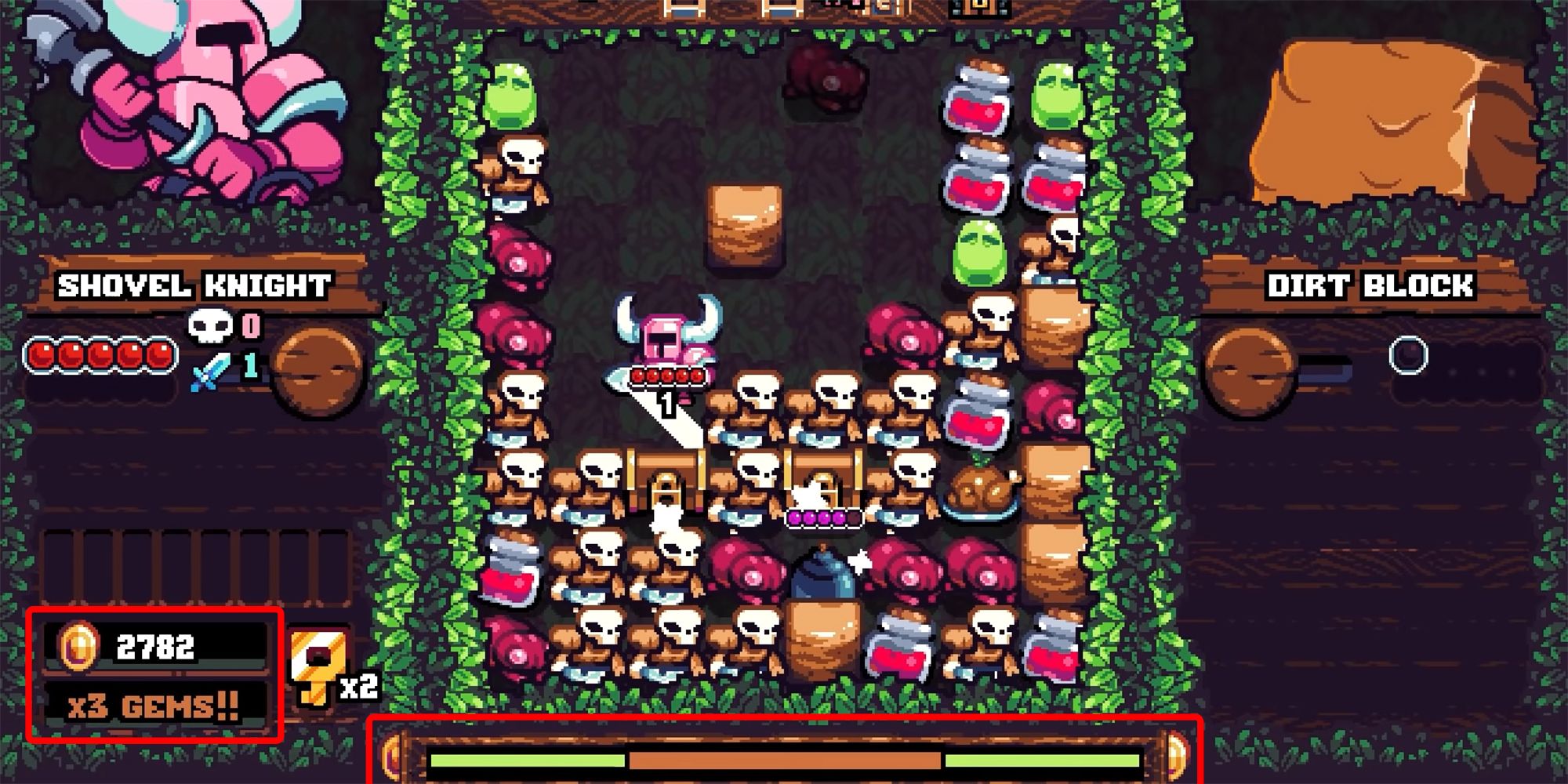There are a lot of different meters, systems, and mechanics to keep track of in Shovel Knight Pocket Dungeon. All at once, players have to constantly monitor their own health, the enemy's health, how much damage both they and their enemy does, the state of the board around them, what items they have equipped, and finally, their Gem Meter. It's the primary reason players are finding Pocket Dungeon to be so impossibly hard, at least so far.
This Gem Meter is actually a bit complicated, so let's go over exactly what it is, how it works, and to keep it filled in the myriad of situations Shovel Knight will be thrown into.
How Important Is The Gem Meter?
The first thing that players should know about the Gem Meter is that it has nothing to do with the player failing a level or dying. All it does is multiply the amount awarded from Chain Kills and Fatal Blows as well as synergizing with a few specific Relics (and playable characters) in-game.
What actually determines if a player lives or dies in Pocket Dungeon are three things:
- Their Health.
- Shovel Knight’s current position.
- And how “filled” the stage is with enemies and objects.
The actual Gem Meter is only for additional currency rewards to spend on Relics in each run or to spend unlocking Relics at Chester’s shop so they’ll appear in future runs, similar to classics like Binding of Isaac. It has absolutely no bearing on the player's life or the win-lose condition.
What Fills The Meter?
Think of the Gem Meter like a secondary timer mechanic, with the obviously primary timer being the spawning and descent of new enemies, blocks, and interactables. If Shovel Knight doesn’t hit something every couple of seconds or so, the Gem Meter starts to decrease.
But, as long as Shovel Knight (or any of the other playable characters) keeps hitting anything at all, even lone enemies, the Gem Meter will usually maintain its current level or at worst, just barely decrease.
To increase it by leaps and bounds and hop up to the next level of reward multiplication, players need to:
- Get Chain Kills
- Kill multiple enemies using items in chests or stage hazards
- Or, run around hitting lone enemies, but this is the worst and most suicidal option in most cases.
The actual “physics” of the Gem Meter are interesting as well. The color filling it sort of “bounces” toward the edges of the meter, with an increase in momentum when the player hits something, a stall when it reaches the apex of its forward momentum, and a gradual decline if nothing additional is hit by the player afterward.
Just be aware that when the Gem Meter starts to fall for more than about a half-second, it starts falling very quickly, so try not to wait too long before the next attack.
How Many Levels Does It Have?
The Gem Meter has technically “four” states and fills with color from the middle to the edges of the bar as the player builds up more points/Gems. As the bar fills, the color gets lighter and lighter until it fully crosses over into the next color and increases the Gem multiplier.
That may sound confusing, but it basically boils down to:
- When the bar is empty and is “filling" with blue = normal Gem amounts.
- When the bar is blue and is “filling” with green = two times Gem amounts.
- When the bar is green and is “filling” with orange = three times Gem amounts
- When the bar is orange and is “filling” with red = four times Gem amounts.
Players can also keep track of where the bar is at without looking away from the actual “board” by keeping an eye on what gems are popping out of enemies they kill:
To be more specific, there are four types of gemstones with colors that match the color of the bar during its multiplier bonus. These gemstones are:
- A blue “square” stone = default Gem amounts
- A green “rectangular prism” stone = two times
- A yellow-orange “circular” coin = three times
- And large pinkish-red Diamond gems = four times
Of course, there are exceptions to this but it's a good general rule of thumb to keep in mind so that the player doesn't have to constantly keep their vision bouncing between the board and the meter at the bottom.
Shovel Knight Pocket Dungeon is available on PS4, PC, Switch, and Xbox One.

